
Ingredients
With its rich, buttery, salty flavor and its lighter-than-air, fluffy, tender texture, bubble bread is the perfect bread to serve with lunch, dinner, or enjoy as a snack. If you're tired of dinner rolls and looking for a fun, tasty way to make bread you can use to mop up mouthwatering gravies, soups, and stews, buttery bubble bread is the answer.
Bubble bread is easy to make, especially if you're a seasoned baker who has made bread or rolls in the past. You don't need any special ingredients to make bubble bread at home. Ready to make the tastiest, most mouthwatering, fluffy bread you'll ever try? Let's dive in!

What is Bubble Bread?
Buttery bubble bread is similar to dinner rolls, thanks to its light, fluffy texture. It's also very like monkey bread because it can be pulled apart. Unlike monkey bread, which is sweet, bubble bread is unsweetened and has a more buttery, savory flavor.
Made by rolling dough into “bubbles” then baking them in a bundt pan, bubble bread is a fantastic bread you can serve in place of dinner rolls at mealtime.
How to Make Buttery Bubble Bread
To make bubble bread, start by whisking the yeast and warm water in the bowl of your stand mixer. Let it rest for a few minutes until it becomes foamy. Pour in the sugar, shortening, egg, and salt, and beat the mixture on low to combine. Add in one cup of flour at a time, then knead on low until the dough becomes smooth and comes away easily from the side of the bowl.
Transfer the dough to the greased bowl, and cover it with a damp paper towel. Leave it in a warm place until it doubles in size. Once it's doubled, place the dough onto a floured work surface and cut it into 30 equal-sized portions.
Shape the dough into smooth balls. Dip the dough balls in melted butter, then put them into a greased bundt pan. If there's any butter remaining, pour it over the top of the dough. Cover with a damp paper towel and let the dough double in size.
Bake the bubble bread for 20 to 25 minutes at 350F. Pour the melted butter over the bread, then invert the bread onto a serving plate. Garnish the bread with salt and serve warm.

Tips for a Soft Bubble Bread Loaf
The water shouldn't be too hot or too cold. Aim for 105 to 115F to ensure the yeast will activate.
The key to making ultra-soft bubble bread is to knead it well with your stand mixer. Letting it rise, followed by a final proof once you've formed the dough balls is also essential for making sure your bread is fluffy and tender.
You can add other ingredients to your bubble bread. Spices like cinnamon and nutmeg are great if you want a sweeter version, but you can also add garlic, dried herbs, and cheese for savory bubble bread.
What to Serve with Bubble Bread
With its buttery, salty flavor and soft, incredibly tender texture, like classic dinner rolls, bubble bread is perfect for mopping up all types of soups and sauces. Serve it as a side dish with roasts and gravy, your favorite soups, pasta, salads, or any time you marinate and bake fish, meat, or poultry.
There's really no dish out there that isn't made better with a helping of bubble bread!
How to Store Buttery Bubble Bread
Leftover bubble bread should be wrapped in cling film and stored at room temperature for up to 2 days.
It'll last up to 1 week in the fridge but may dry out slightly.
Instructions
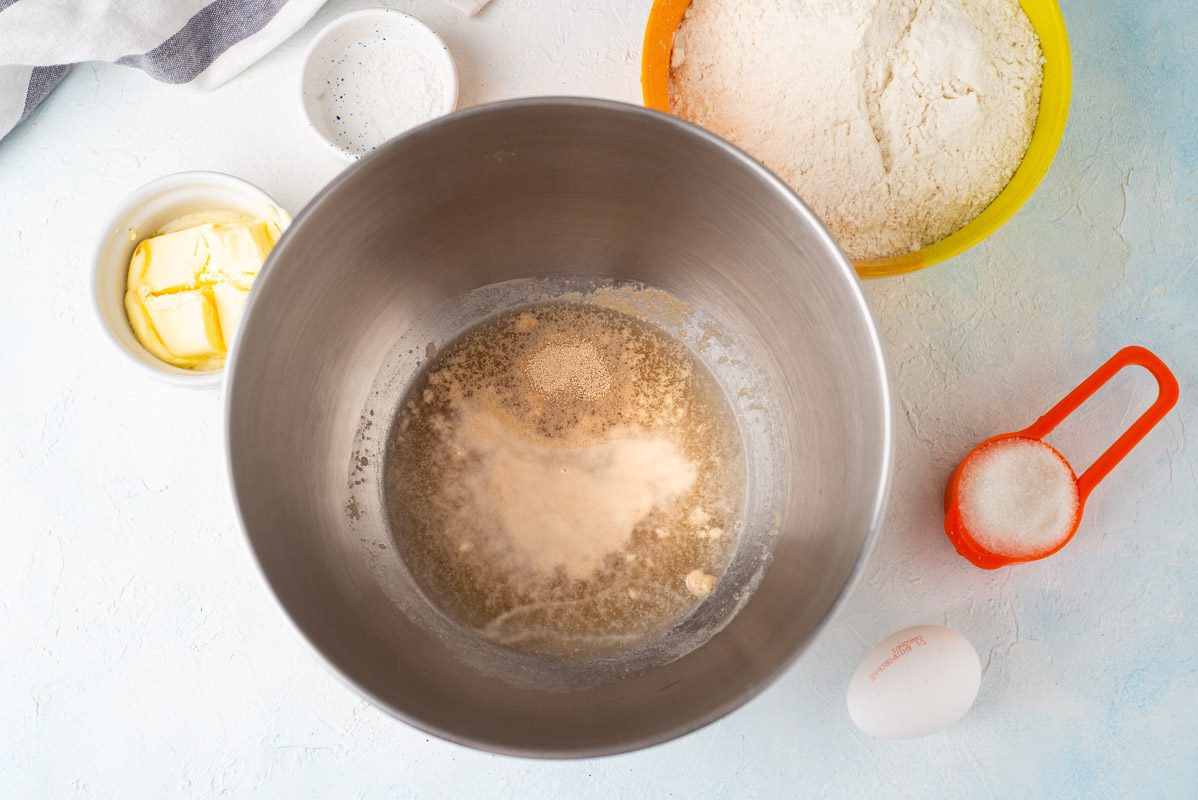;Resize,width=712;)
Combine yeast and water in the bowl of a stand mixer. Leave for several minutes, until frothy.
Combine yeast and water in the bowl of a stand mixer. Leave for several minutes, until frothy.
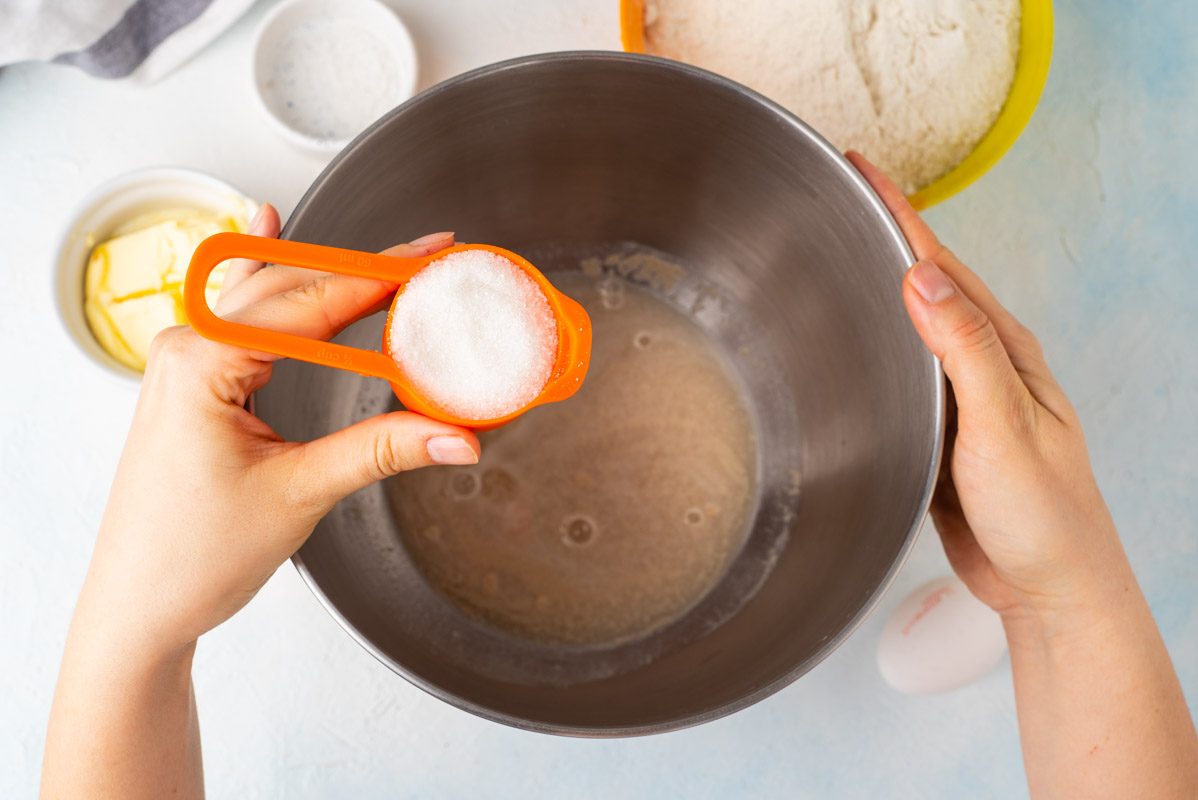;Resize,width=712;)
Pour in the sugar.
Pour in the sugar.
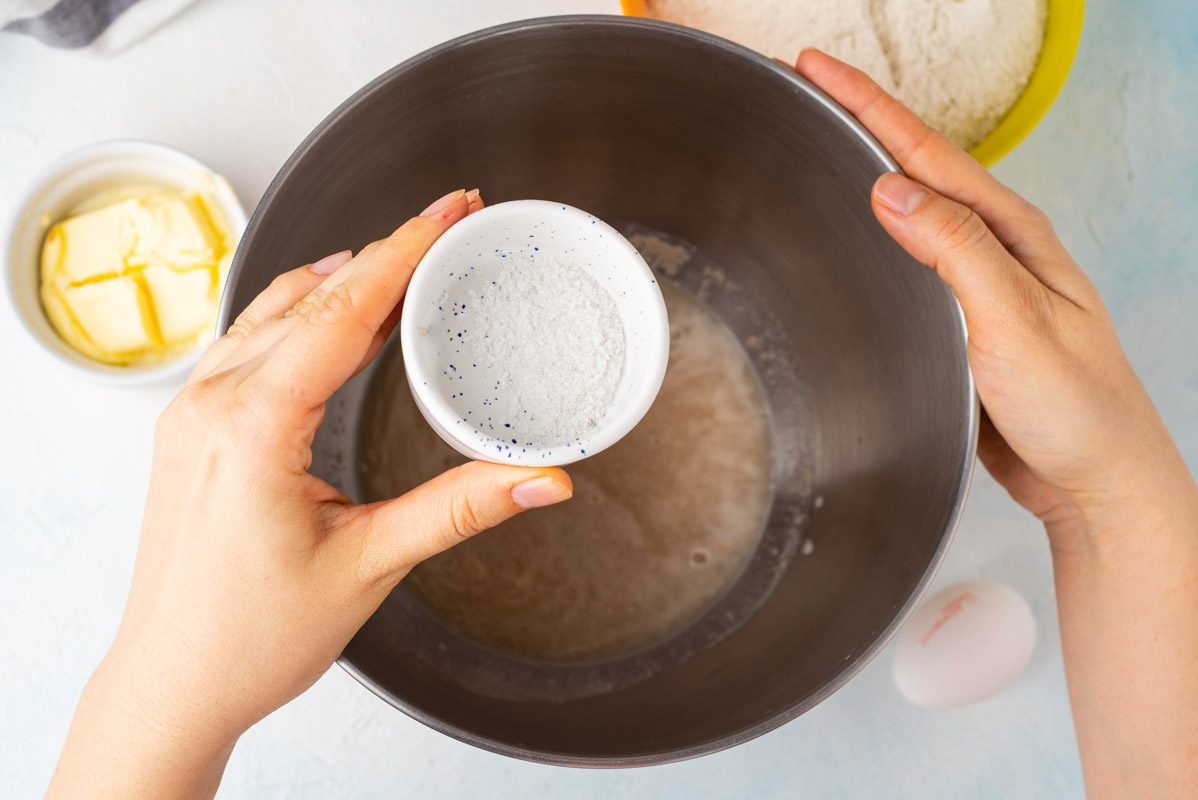;Resize,width=712;)
Ad in the salt.
Ad in the salt.
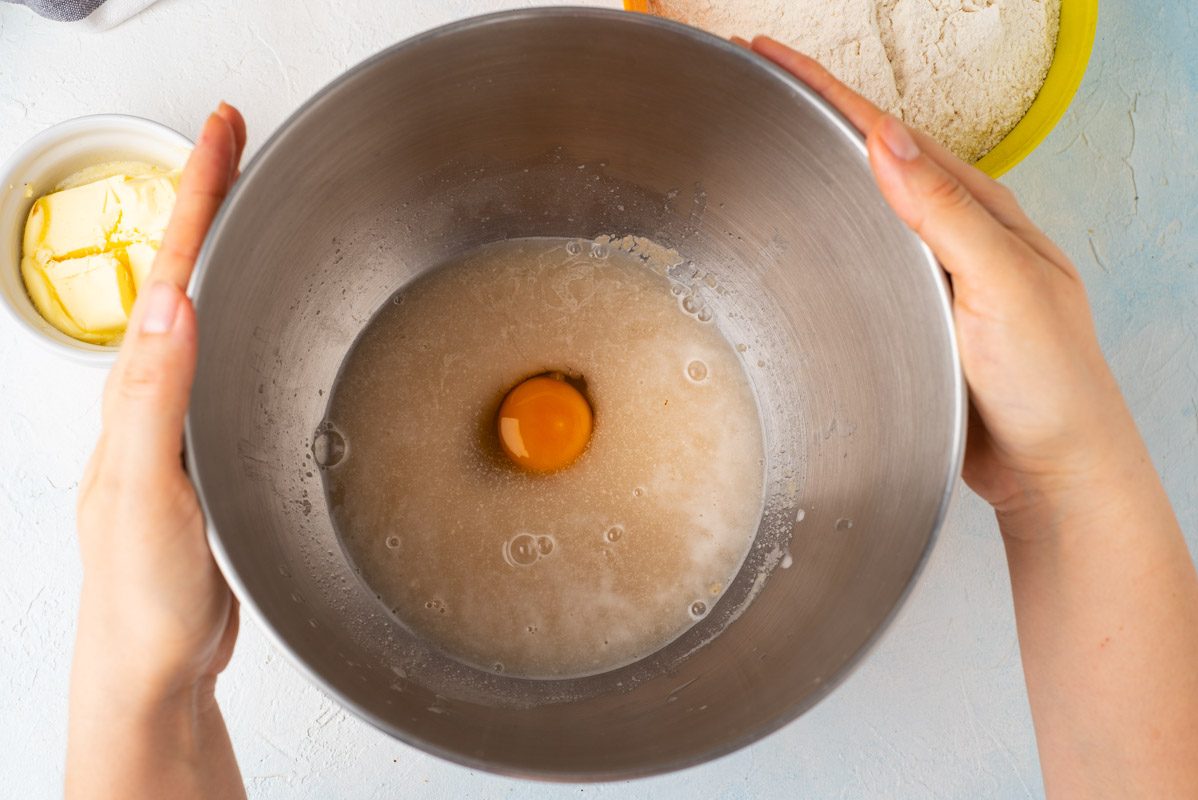;Resize,width=712;)
Add in the egg.
Add in the egg.
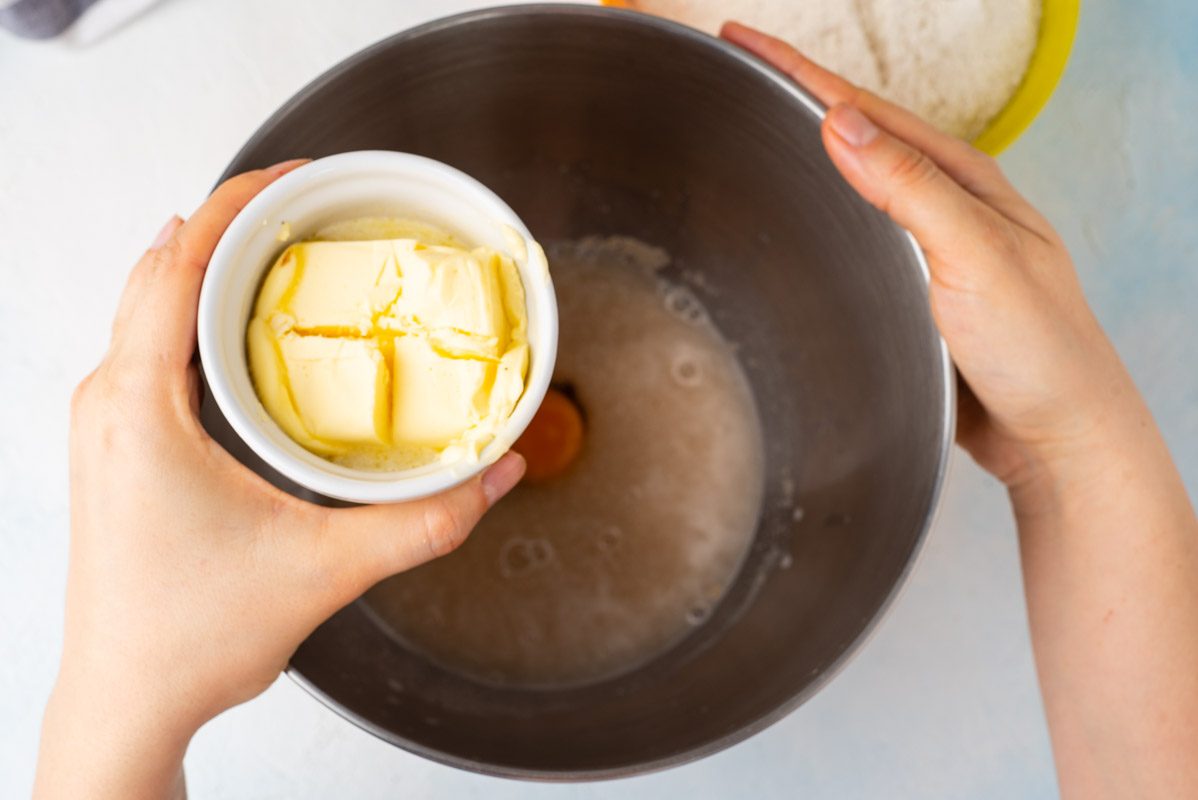;Resize,width=712;)
Add in the shortening.
Add in the shortening.
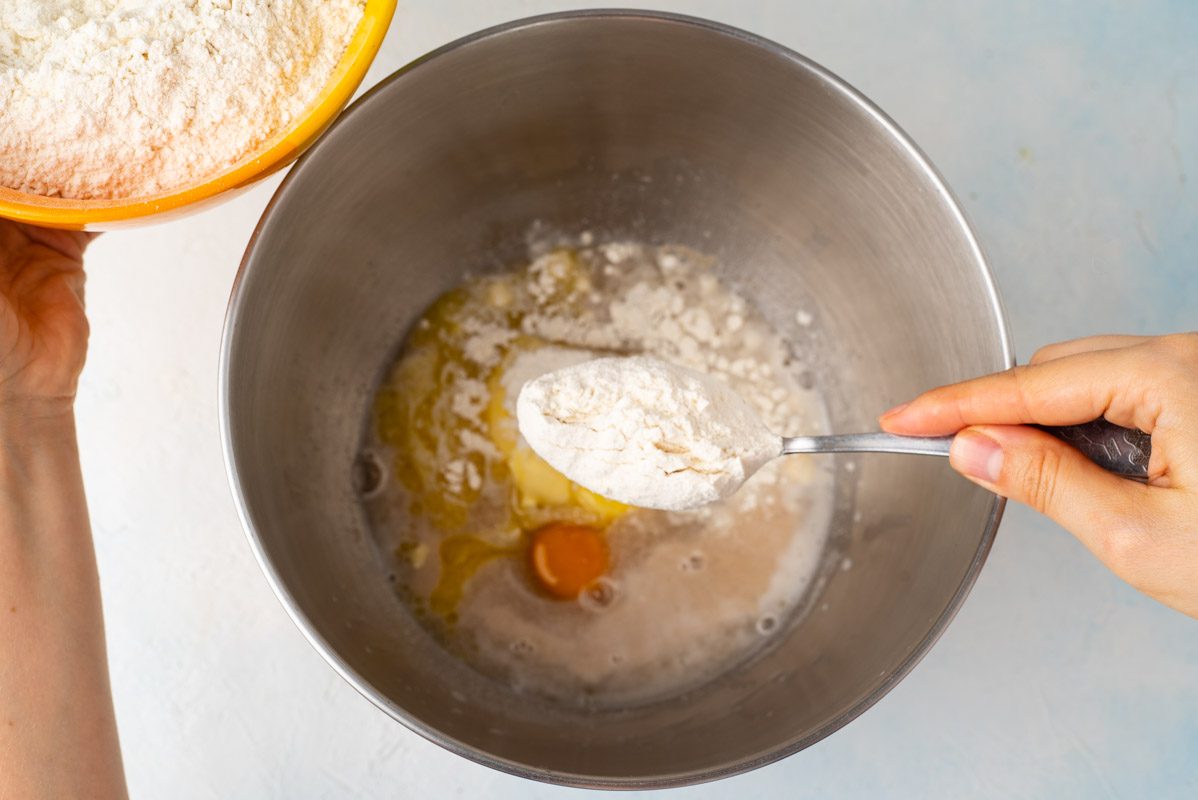;Resize,width=712;)
Beat in one cup of flour at a time, then knead until smooth, about 5 minutes.
Beat in one cup of flour at a time, then knead until smooth, about 5 minutes.
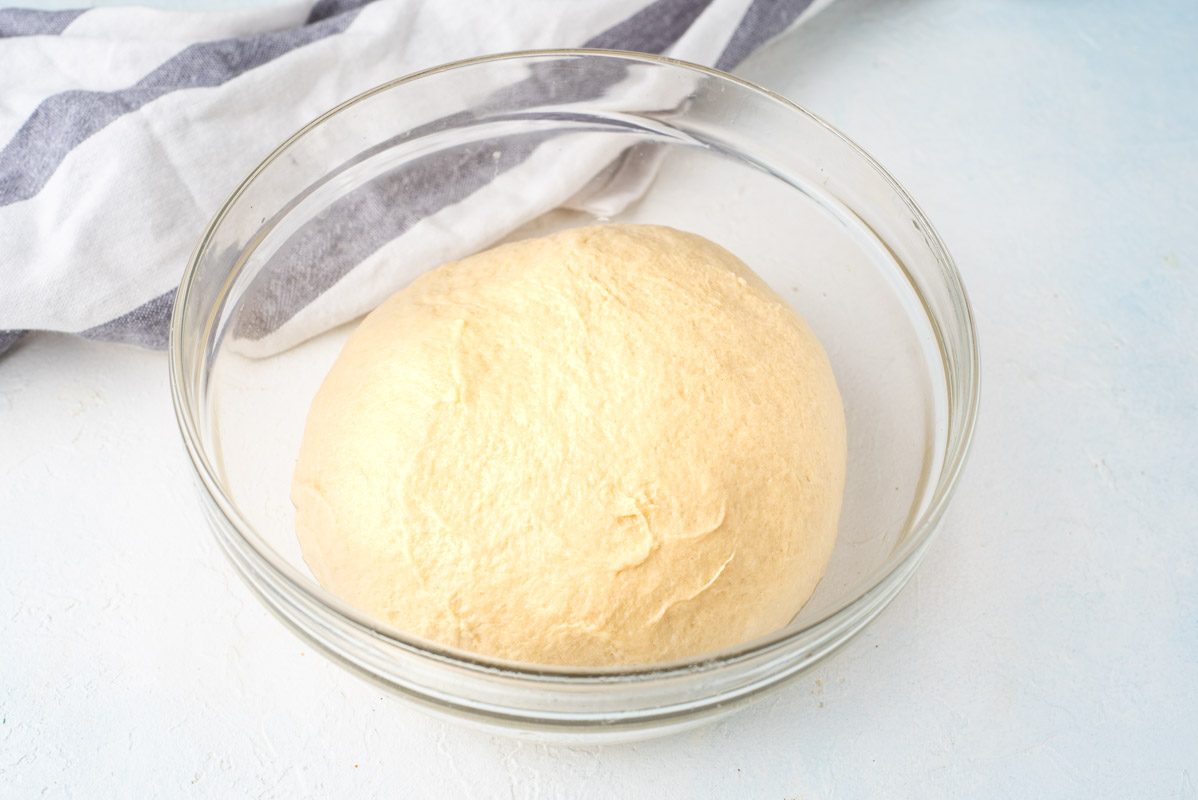;Resize,width=712;)
Grease a bowl with cooking spray. Transfer the dough to the greased bowl, swivel it around in the oil, then cover with a damp paper towel.
Grease a bowl with cooking spray. Transfer the dough to the greased bowl, swivel it around in the oil, then cover with a damp paper towel.
;Resize,width=712;)
Put it in a warm place for an hour, or until it doubles in size. Grease a bundt pan and set it aside.
Put it in a warm place for an hour, or until it doubles in size. Grease a bundt pan and set it aside.
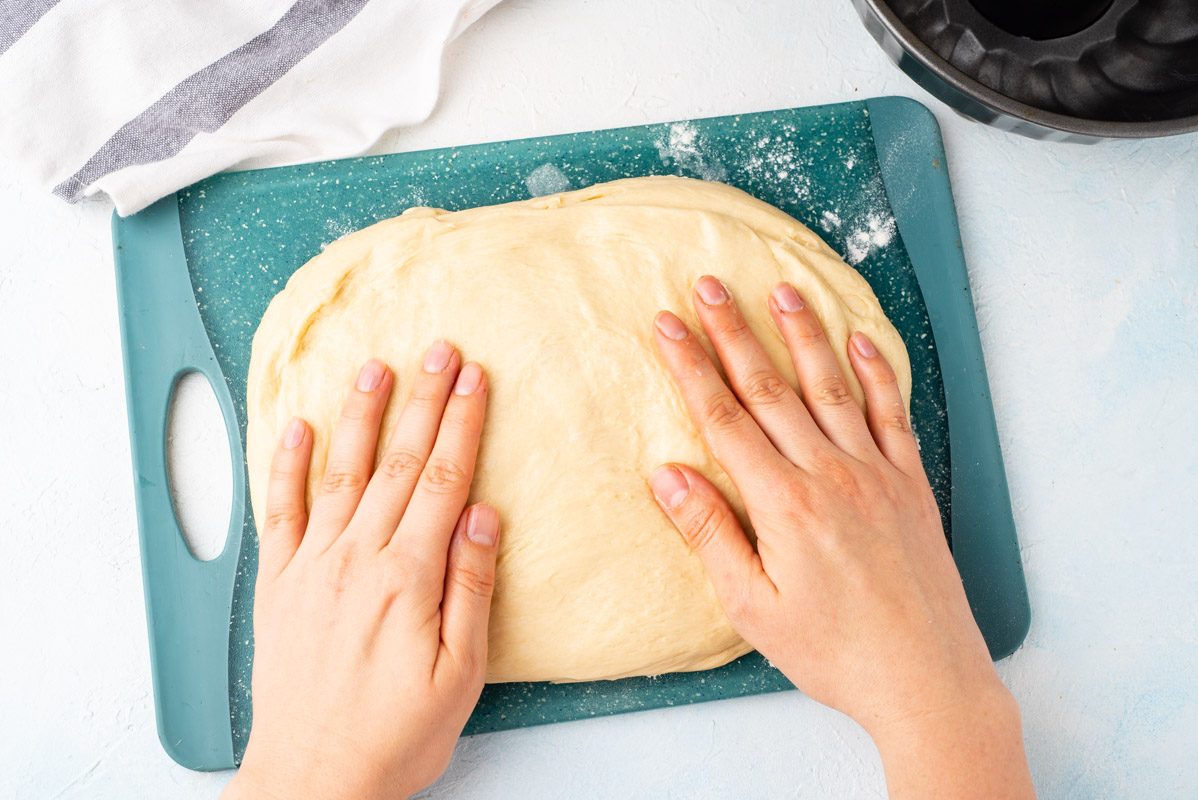;Resize,width=712;)
Lightly flour a work surface. Place the dough on the work surface.
Lightly flour a work surface. Place the dough on the work surface.
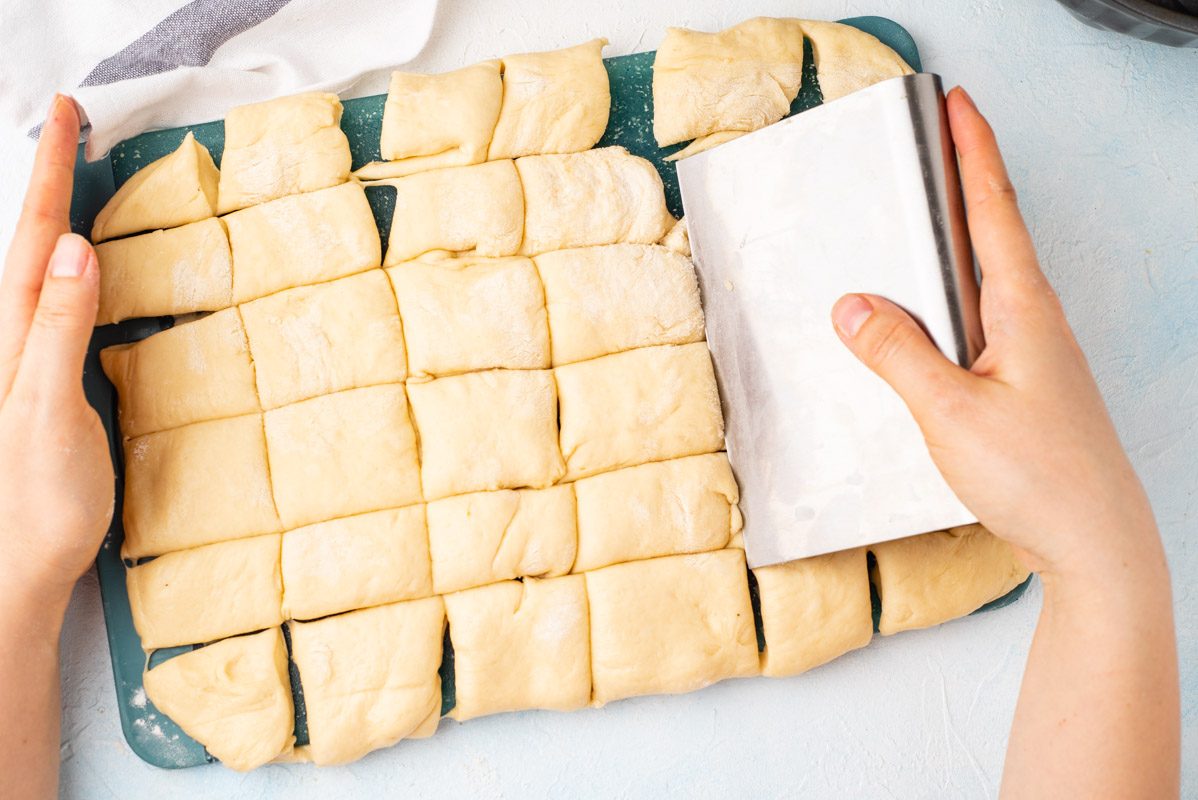;Resize,width=712;)
Cut the dough into 30 equal-sized portions.
Cut the dough into 30 equal-sized portions.
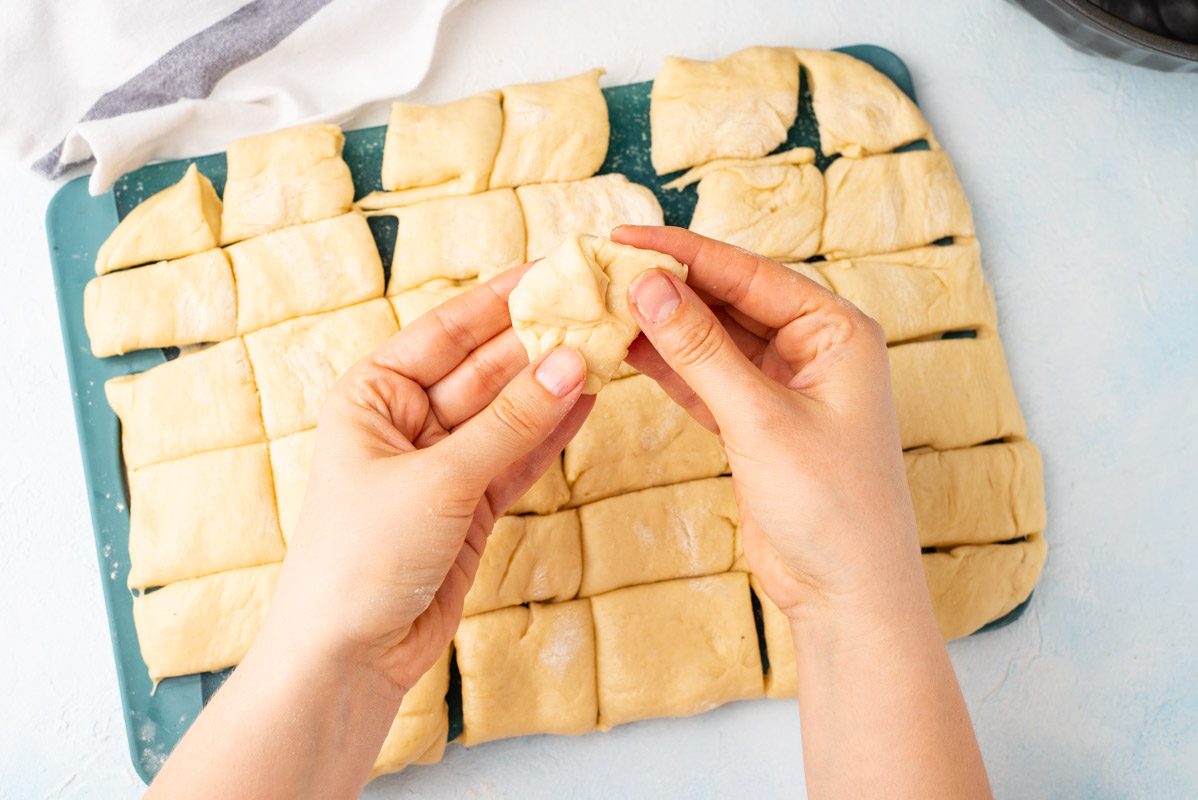;Resize,width=712;)
Roll the dough portions.
Roll the dough portions.
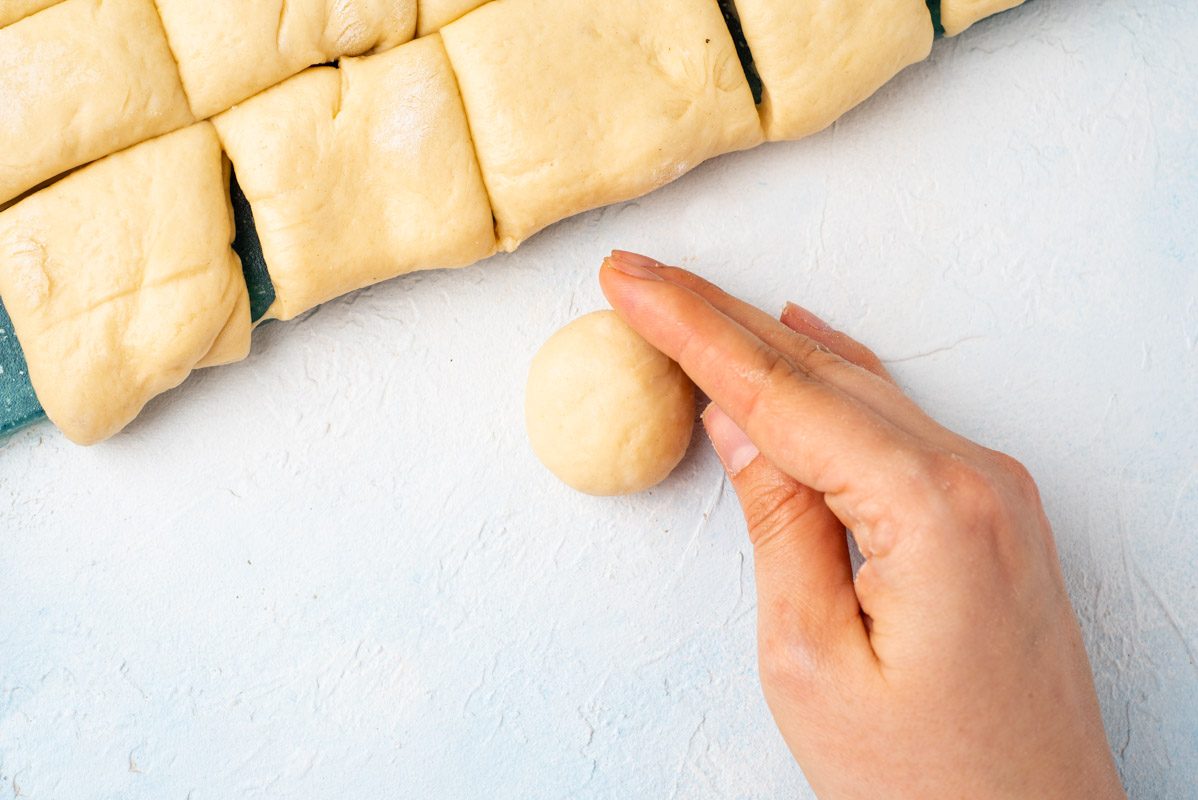;Resize,width=712;)
Each dough portion should form smooth balls.
Each dough portion should form smooth balls.
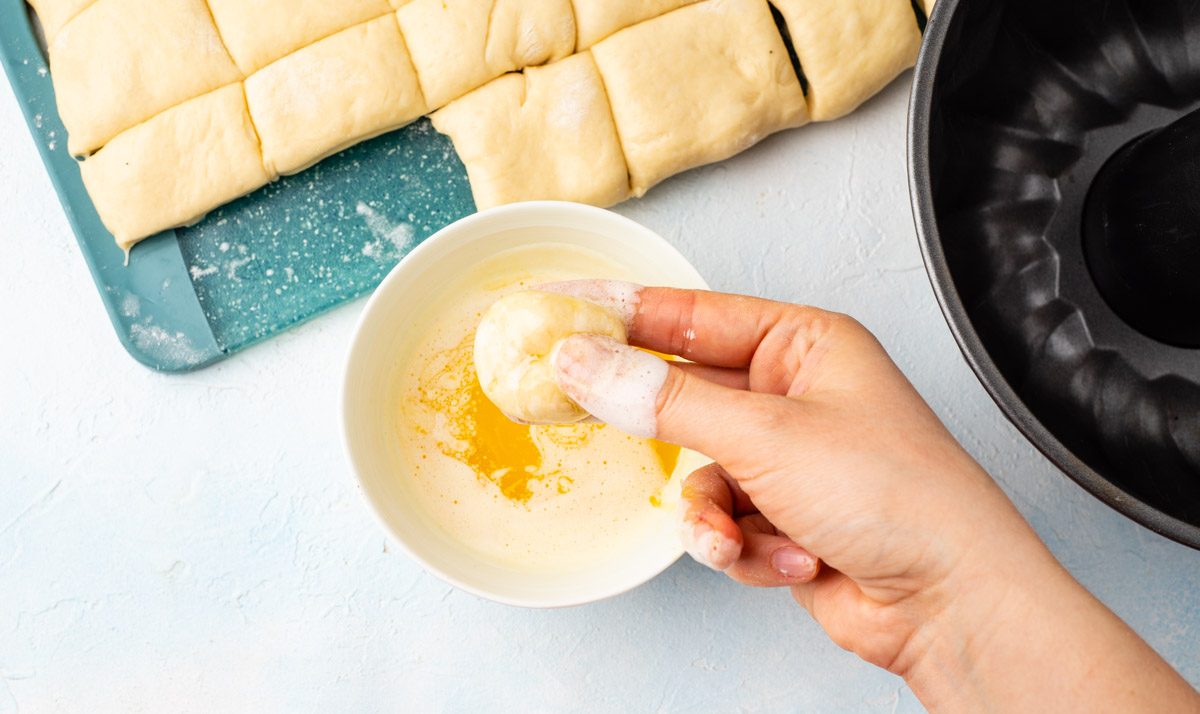;Resize,width=712;)
Pour the melted butter into a bowl. Dip each dough ball in the butter.
Pour the melted butter into a bowl. Dip each dough ball in the butter.
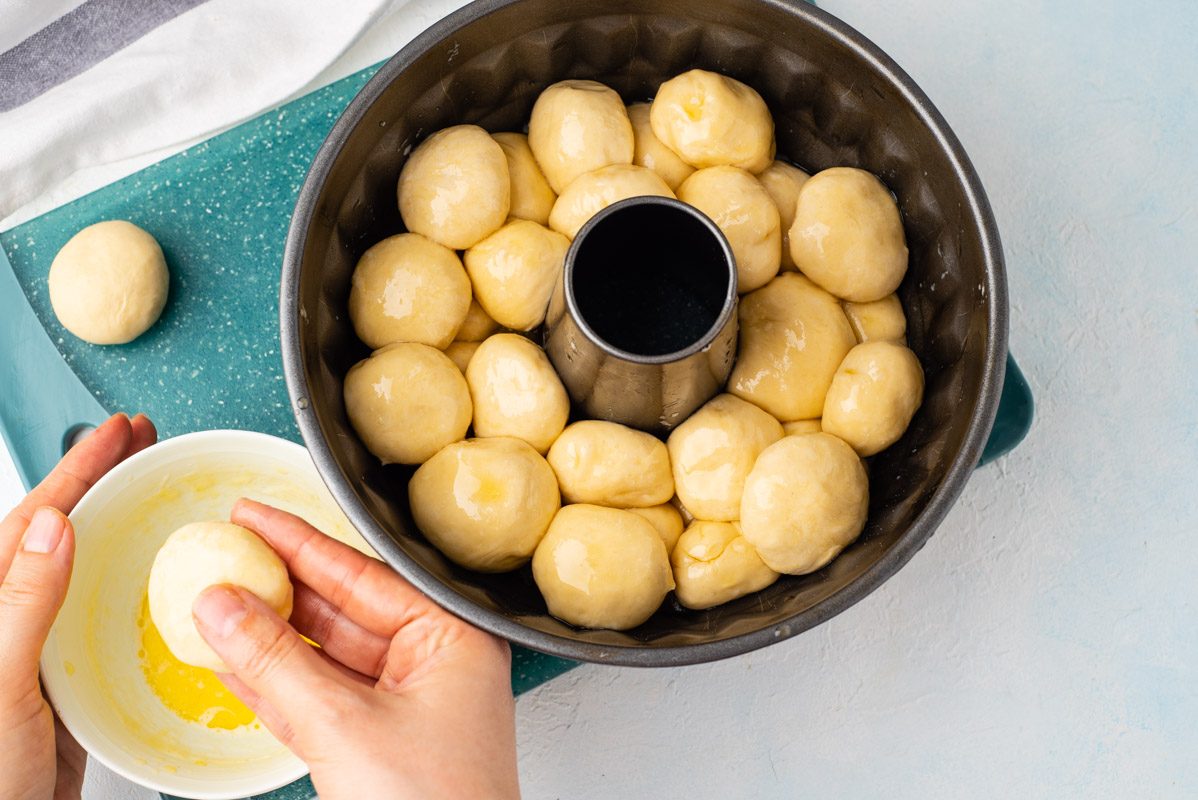;Resize,width=712;)
Place the buttered dough balls into a bundt pan.
Place the buttered dough balls into a bundt pan.
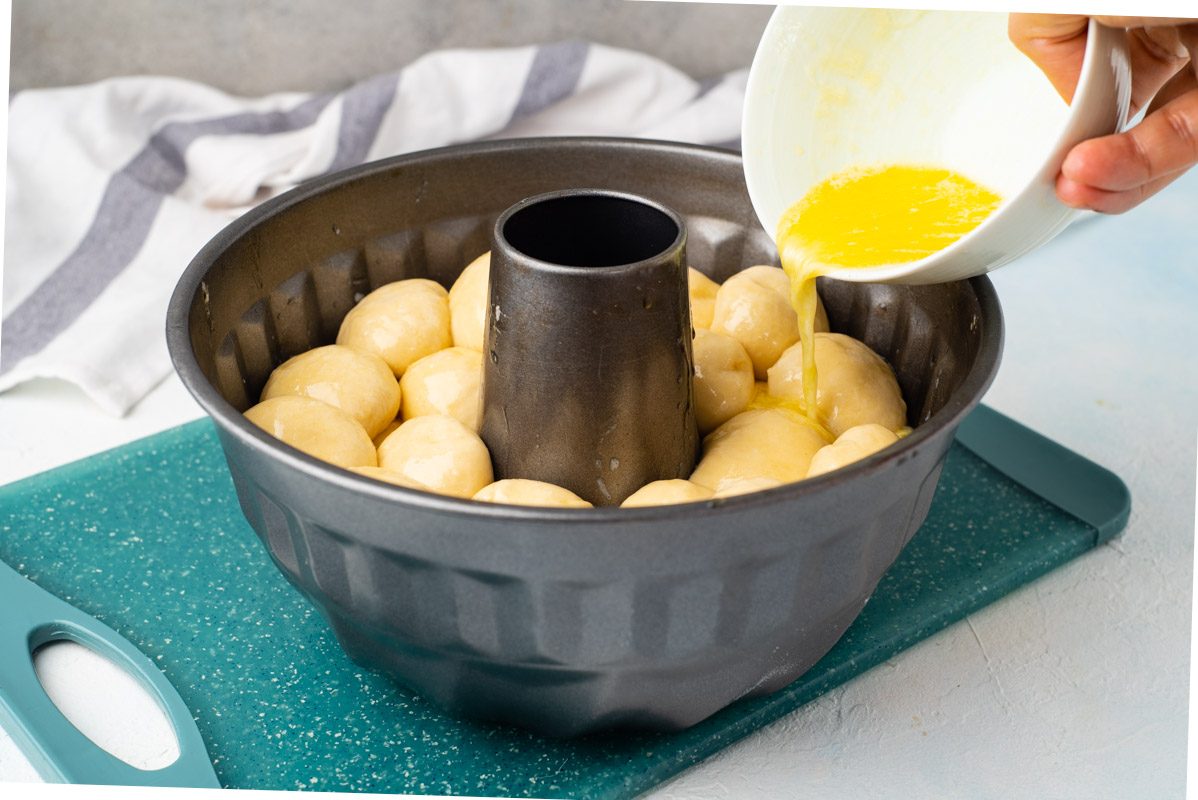;Resize,width=712;)
If there's any butter remaining, pour it over the top of the dough.
If there's any butter remaining, pour it over the top of the dough.
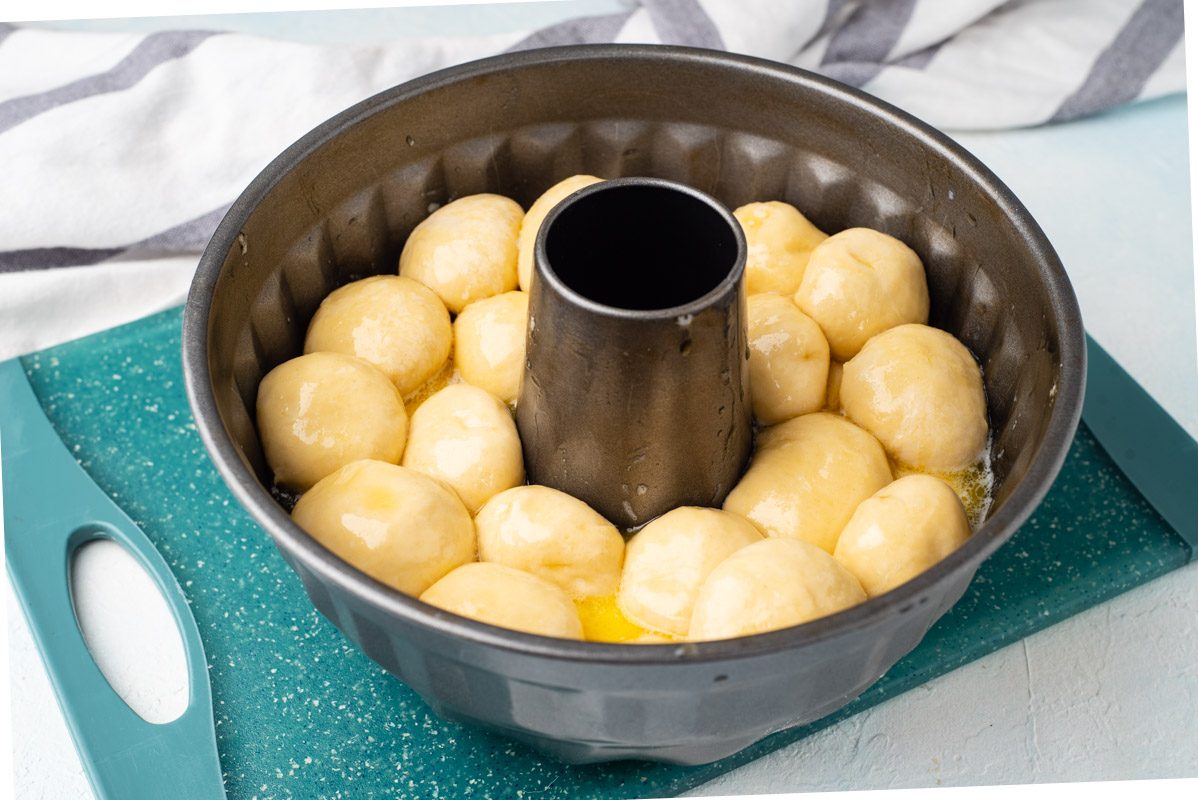;Resize,width=712;)
Cover with a damp paper towel.
Cover with a damp paper towel.
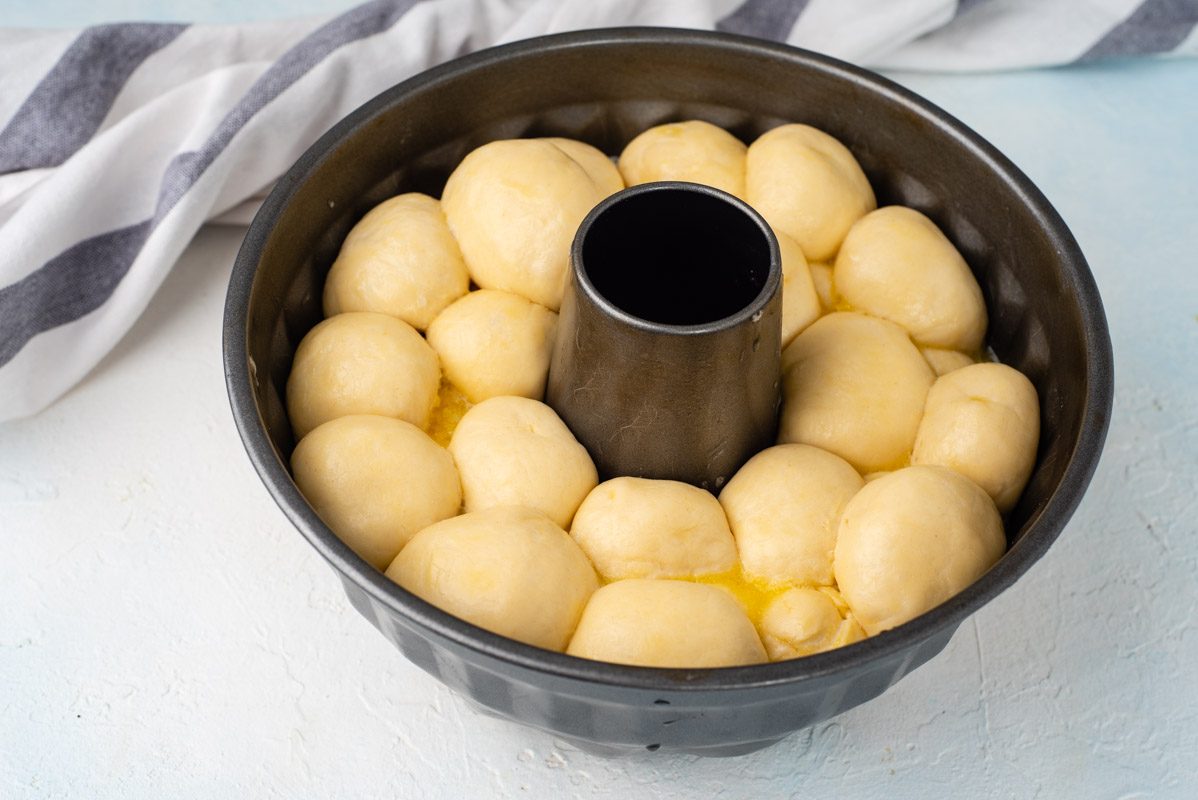;Resize,width=712;)
Let the dough double in size.
Let the dough double in size.
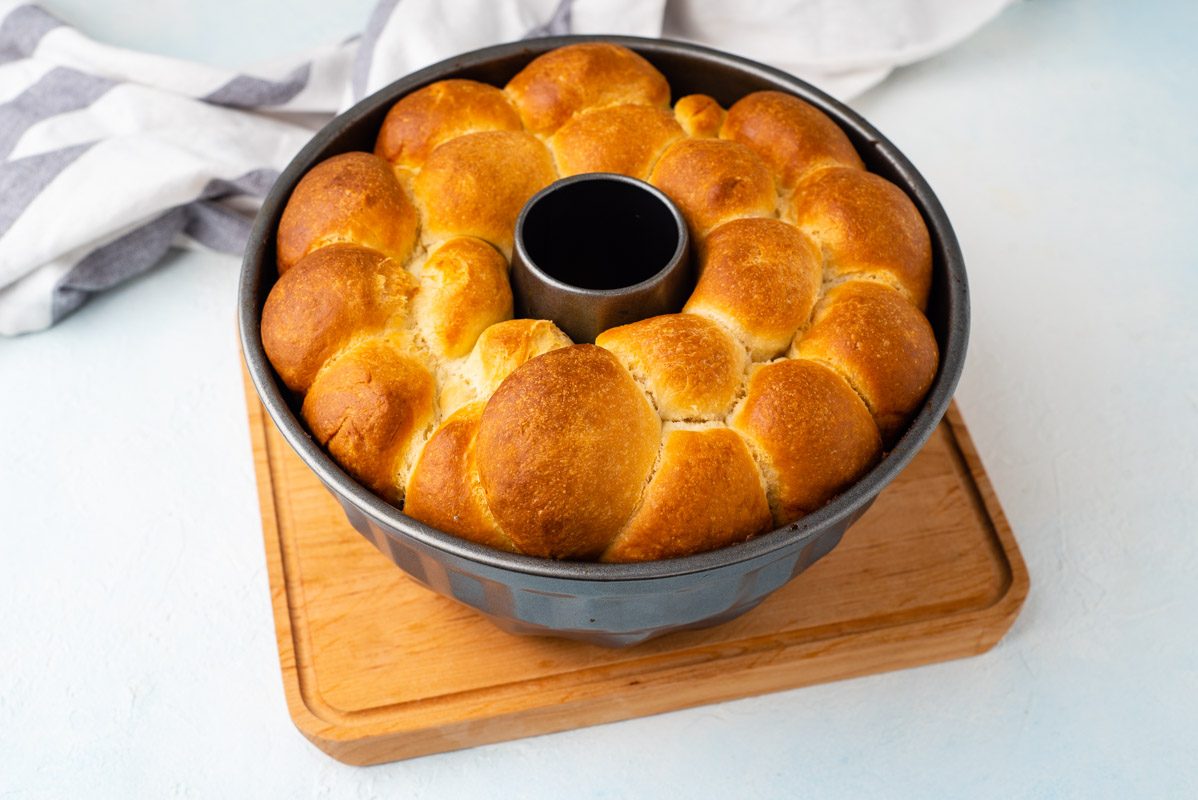;Resize,width=712;)
Preheat your oven to 350F. Bake the bubble bread for 20 to 25 minutes. Take out of the oven and pour the 4 tablespoons of melted butter over the bread.
Preheat your oven to 350F. Bake the bubble bread for 20 to 25 minutes. Take out of the oven and pour the 4 tablespoons of melted butter over the bread.
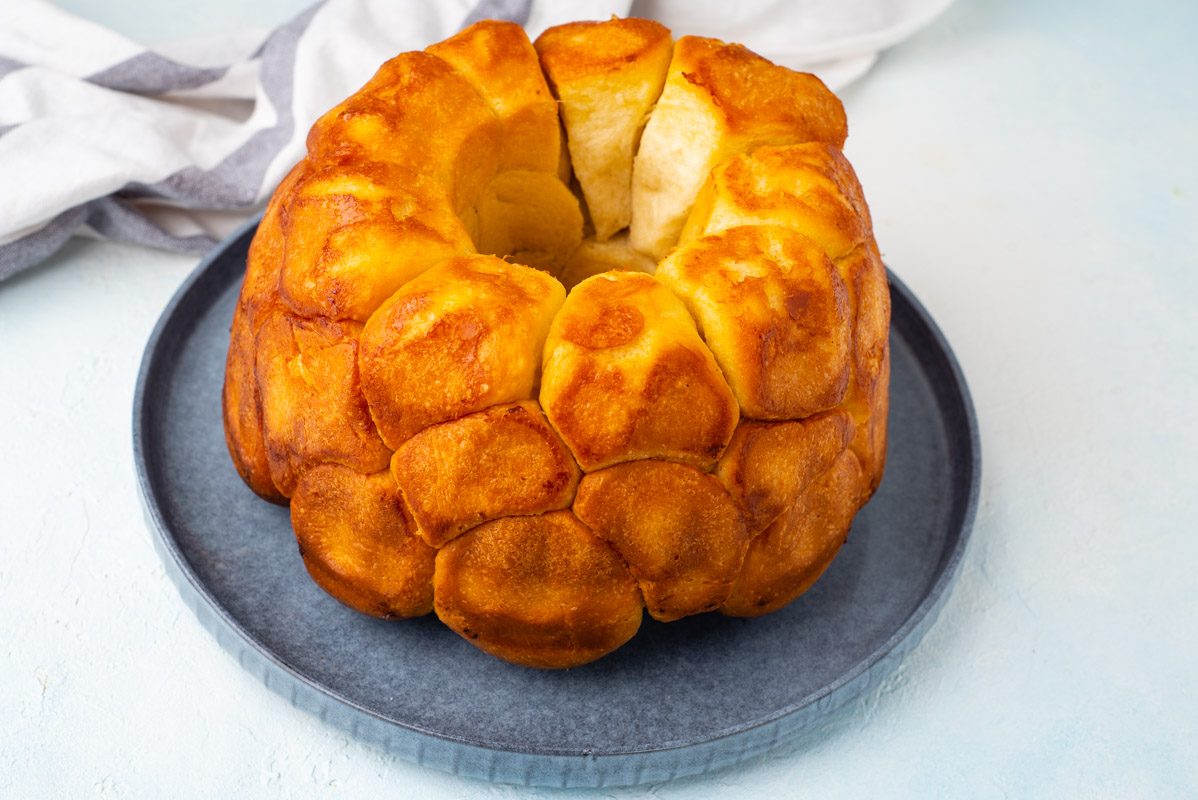;Resize,width=712;)
Place a plate over the bottom of the pan and invert it. Garnish the bread with salt and serve warm.
Place a plate over the bottom of the pan and invert it. Garnish the bread with salt and serve warm.
;Resize,width=767;)
